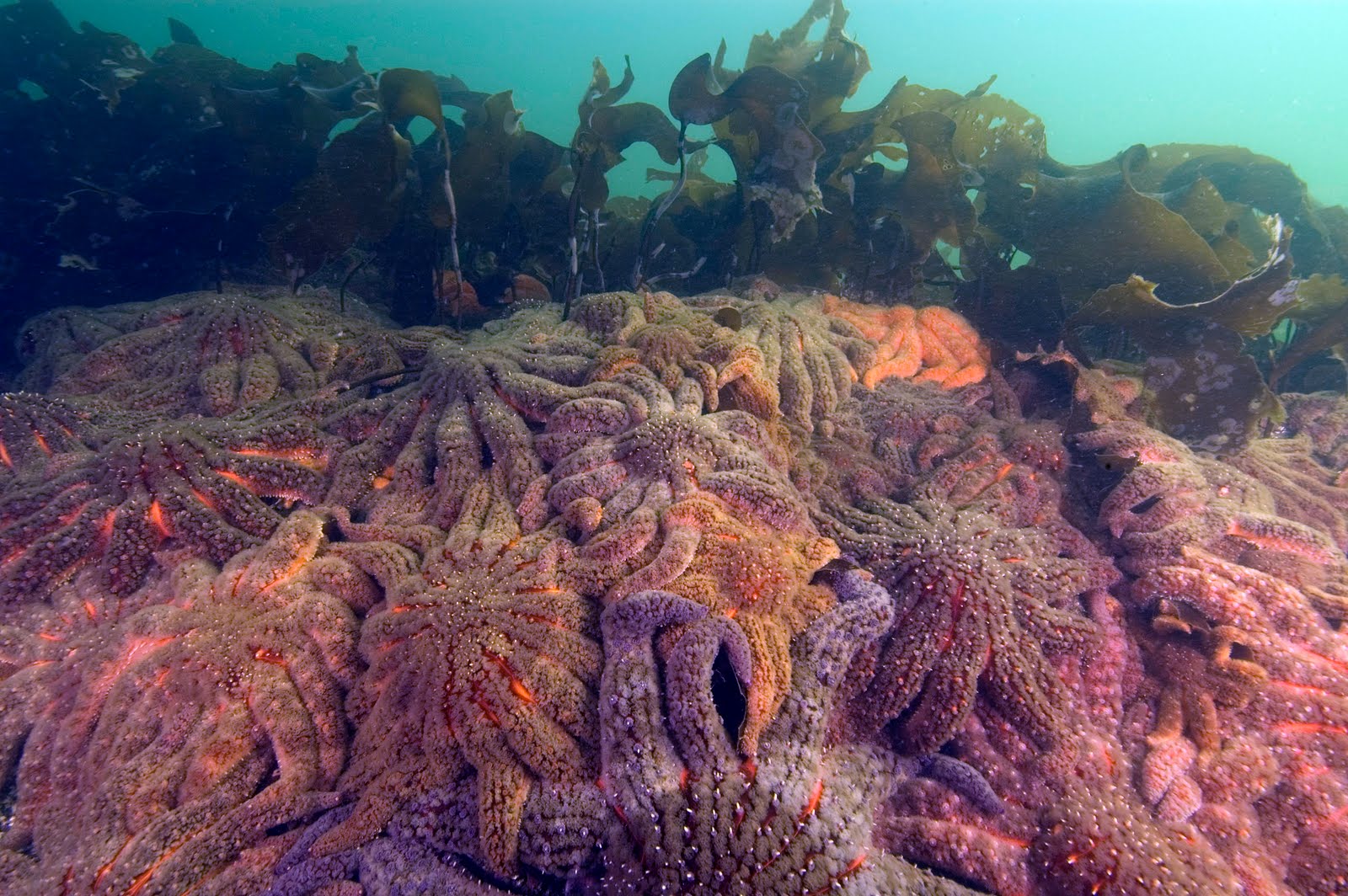By Catherine Drake, Invertebrate Zoology Lab
One great aspect of being a graduate student in the invertebrate zoology lab at MLML is that we get the chance to take care of various invertebrates in our aquarium room. Currently, we have anemones, mussels, crabs, and sea stars living in our tanks. One of the sea stars, called a sunflower star (Pycnopodia helianthoides), is special and gets its own tank for a number of reasons. Firstly, the sunflower star is the largest sea star in the world, and can grow up to one meter in length. Sunflower stars generally have 15 to 24 arms, which is more arms than any other species. They are also the heaviest sea star and can weigh up to 5 kilograms, which is about 11 pounds. So we like to give our big star plenty of room to roam around - sunflower stars are fast and can move up to one meter per minute!

Below is a video of our sunflower star, and you will be able to see various distinctive features. Along its arms are tube feet, which operate by hydraulic pressure and are part of the water vascular system that facilitates respiration, movement, and feeding. Sunflower stars generally have about 15,000 tube feet! In the center of the body, you can see a white spot, or madreporite, which is a water filter for the vascular system. The blue nodules on the sea star are called pedicellaria, which are pincers on the body wall and are used for protection; if you put your hand on them, it feels like Velcro!

